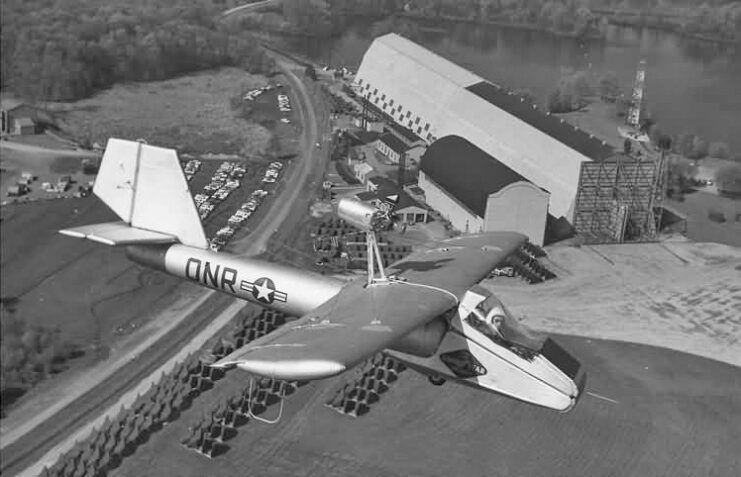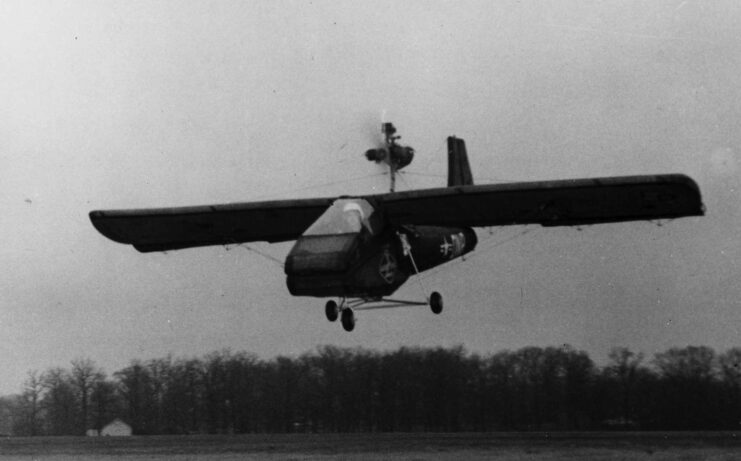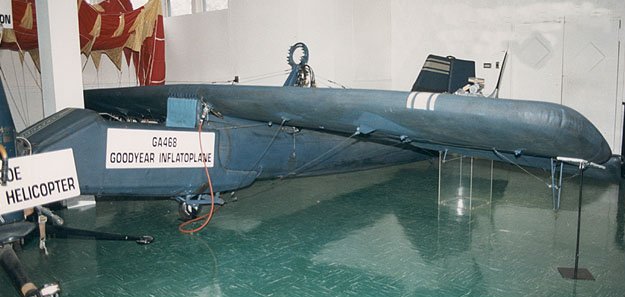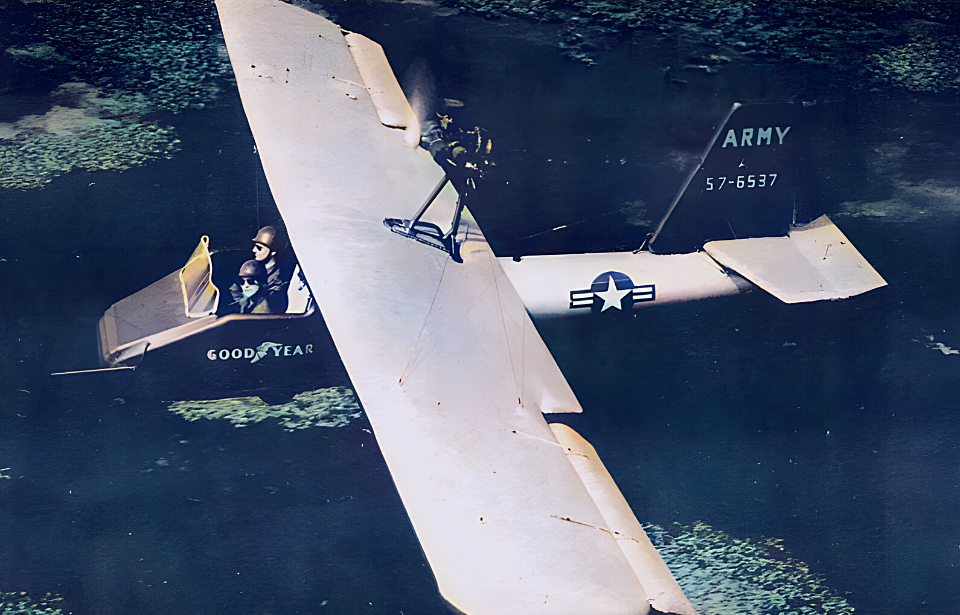During the 1950s, Goodyear became more involved with the US military, trying its hand at creating an aircraft that was compact enough to be delivered to downed pilots, but still capable of flying. To achieve this, the company created the Inflatoplane. The program existed for several decades, and while the aircraft did get off the ground, the concept itself never really took off and was canceled before the inflatable aerial vehicle could enter service.
Goodyear tried to blend lighter-than-air materials for aircraft

In 1956, the Goodyear Company combined its lighter-than-air aircraft technology with winged aircraft to create the inflatable “Inflatoplane.” The idea was first coined by Taylor McDaniel in 1931. When Goodyear took it on, the company intended it to be used in rescue operations, and it took only 12 weeks to develop the first model.
The innovative exterior of the aircraft, called Airmat, was made from two rubber-type materials connected by nylon mesh. When exposed to air, this absorbed and repelled water as it became stiff, providing the aircraft with the necessary rigidity to fly. Forced air being circulated through the Inflatoplane by its motor helped to maintain this shape.
The structural shape provided the Inflatoplane with some resilience to punctures, as it was able to take up to six .30-caliber bullets and remain in-flight. The fuselage, landing gear and pilot seat was reinforced to ensure stability, as well.
Packed in a 44-cubic-foot box, it could be compactly transported in a truck or aircraft and dropped behind enemy lines to provide downed pilots with a way to reach friendly territory. Once it was dropped, the Inflatoplane was removed wheelbarrow style and could inflate to full size in about five minutes, using less air pressure than what’s required for a car tire.
Two versions of the Inflatoplane were designed

Goodyear came up with two versions of the Inflatoplane. The first was the GA-468, a single-seater aircraft that could inflate fully in a matter of five minutes. Equipped with a 40 horsepower Nelson engine, the pilot had to hand-start it and needed 250 feet of open space for takeoff. The aircraft also needed 575 feet before it could clear a 50-foot obstacle.
Once completely inflated, the GA-468 had a wingspan of 22 feet and was just under 20 feet long. It had a maximum takeoff load of 240 pounds, held 20 gallons of fuel and could fly 390 miles, with an endurance of 6.5 hours. The aircraft reached a maximum speed of 72 MPH and hit a service ceiling of 10,000 feet.
The second variant was the GA-466, a two-seater that took slightly longer to inflate, at six minutes. It was two inches shorter than the first Inflatoplane, but had an extra six feet of wingspan. The GA-466 could only carry 18 gallons of fuel, and its 60 horsepower McCulloch 4318 engine provided a maximum speed of 70 MPH. It required 745 feet to clear a 50-foot obstacle, and could handle a maximum weight of 740 pounds.
Crashes put the program into question

From the beginning, the value of the Inflatoplane program was never definitively positive. The idea of supplying a downed pilot with a new aircraft seemed to always have its problems. They’d have to try and escape enemy territory in the place they’d been shot down and the Inflatoplane they were expected to fly out on was slower and weaker than the one they’d crashed.
There were two crashes in the Inflatoplane that ultimately put the entire program into question. Goodyear test pilot Richard Ulm survived an incident in April 1959, when his crashed into the Patuxent River during a test flight. The wing had collapsed, hitting the propeller, but Ulm was able to bail out and parachute to safety.
A second crash proved fatal when US Army Lt. Malcolm “Pug” Wallace was training in an Inflatoplane. At just 26 years old, he’d flown the aircraft above 700 feet, when a control cable under the wing came loose and became wedged in the pulley bracket. The wings lost air, resulting in them flapping as the aircraft fell, and one of the aluminum tips flung back and hit Wallace in the head.
As an observer described, “Wallace didn’t have enough time to open his parachute. He plunged to his death in a marshy area near the lake.”
More from us: US Navy Pilots Were Afraid to Fly the Vought F7U Cutlass
Only 12 Inflatoplanes were ever manufactured. Despite the crashes, the program continued until 1973. Goodyear donated two for preservation, one to the Franklin Institute of Philadelphia and the other to the Smithsonian Institution in Washington, DC.
